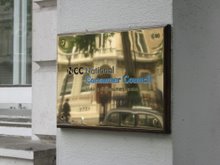23 July: Day 24
“Commissioning” (Contracting) for Social Marketing
The longer I spend over here, the more I become convinced that many of the public health challenges in the two countries (England/USA) are similar. This came out earlier in a training session when participants said that the three biggest obstacles to using social marketing in public health were: getting permission, getting enough time to do it right, and getting sufficient money to support it. I often hear the same three issues in America.
This morning I sat-in on a briefing session with senior-level representatives from a metropolitan PCT (Primary Care Trust) with a large, mostly disadvantaged population. The topic was guidelines for contracting with consultant firms. Senior NSMC staff did a brief orientation and review of social marketing; then presented a number of checklists and tips on “commissioning”—materials (and discussion) that I thought were really helpful. The “What Is Commissioning?” slides discussed the balance between advocating for the public and stewardship of tax revenues. The 10-point checklist established a number of characteristics that potential contractors should display, such as “evidence of systematic scoping (formative research) and development phase;” “evidence of working with multi-sector delivery coalitions,”—in other words, have they really done social marketing before and will they do it for me?
A briefing template takes the public health professional through a step-by-step plan for organizing the social marketing project. It helps to answer the question about whether the formative research (or the firm’s usual approach/product) will have the greatest effect on the project design or what partnerships or stakeholders need to be informed. In addition there were other tip sheets and “working in partnership” guidelines available.
The contracting process in England seems at least as rigid and proscribed as it does in the US. So I thought that the practical guidelines for an agency that was new to matching up social marketing interventions with a chorus of prospective consulting/contracting firms was really a good idea. I hope I am able to bring some of these ideas home and adapt them to our own situation and encourage others in other state and local health agencies to do the same thing. When they appear on the NSMC website (most are still in draft form), I will add a link to my blog.
##
Monday, 23 July 2007
Subscribe to:
Post Comments (Atom)































No comments:
Post a Comment